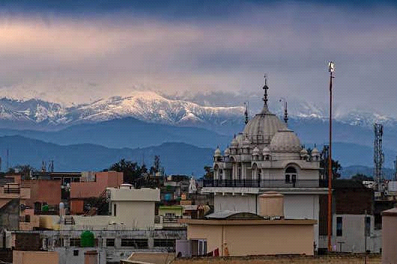IMA Analysis
Monday June 1, 2020
Environment May 2020
Speaker: Adit Jain,Editorial Director, IMA India May 2020
Victims of Expectation

It is mid-May already and the summer sun, although sharp across the plains of Northern India due to remarkably clear skies, has left temperatures fairly tolerable. A gentle breeze is now a perpetual companion lessening the impact of high humidity and the weather, intermittently infused with the occasional showers, has rarely been so different in the near three decades that I have lived in Delhi. The evenings are particularly delightful due to an obvious drop in heat conditions. Unlike the horrible pinkish-blue haze, persistent in summer months, caused by a combination of industrial and vehicular pollution, we are blessed with clean air, levels of particulate matters so low that you could almost smell the freshness and stars visible in the evening sky. The lockdown, while unfortunate from many perspectives has, in the least, benefited the environment in ways never seen before. All of this has perhaps offered an insight on the air future generations might breathe, in a low carbon future.
According to the World Health Organisation, about 3 million people die prematurely each year from ailments caused by air pollution and, in India particularly, over 90% of the population of urban dwellers are exposed to surroundings that are far and beyond what is considered safe for human habitation. Over 1.3 million untimely deaths take place annually because of pollution. Satellite images have revealed drops in nitrogen dioxide levels by about 50% across the world. Most of this comes from automobiles and power plants and exacerbates respiratory ailments such as asthma, lung and heart conditions. Oddly the lockdown, whilst intended for different reasons, has served as the largest ever experiment in checking global pollution. China, at emission rates of 40 mega tonnes a year of nitrogen oxides, accounts for over 50% of Asia’s contribution.
The environmental consequences of the lockdown are noticeable in numerous ways. The Great Himalayan Range, is now visible from parts of the Punjab and the Langtang Range from Kathmandu valley. Wild animals stray on to highways and criss-cross villages as they migrate unhindered from one section of forests to another. Migratory corridors, essential for conservation, have over the years been interrupted by encroachments on forest land by human habitation and construction.
Understandably, improvements in the environment cannot be sustained if they come at heavy economic and social costs to people and what is required is a systemic change across the world in the energy and transport infrastructure. However, that too comes at a price and more importantly requires a serious political commitment across the world. Major polluting countries, many of which are amongst developing ones, need to balance their economic goals with those of society and the longer-term survival of the planet. This view has been pushed for two decades by environmental lobby groups and despite some traction amongst European countries, have found scare support in others such as the United States and China, two of the biggest polluters. More recently, oil companies have effectively lobbied the US Administration for a bail out. Under the cover of the crisis, the White house has rolled back fuel economy standards for the car industry, the environmental protection agency has stopped enforcing environmental laws and some states have criminalised fossil fuel protesters. Governments across the world will provide bailouts for aviation companies.
For now, albeit temporarily, nature has prospered in some parts of the world. But that is not to say that all is well. In Kenya and Tanzania, for instance, a radical drop in tourism has affected the revenues of national parks specifically the Masai Mara and Serengeti and consequently authorities have been unable to pay wages to park rangers, leading to higher levels of poaching, mining and logging. Local communities, that have a share in park revenues, on grounds of lost incomes have found new ways to feed their families.
Be that as it may, the positive environmental impact could hopefully shift public opinion in democracies across the world and subsequently drive political positions favourably. Of new infectious diseases, over 75% come from animals through wildlife trafficking and private breeding programmes. China, by far, is the biggest contributor to the illegal wildlife trade, as some traditional medicines contain animal parts – for instance those of rhinos and tigers. There are global calls for shutting wet-markets that sell all forms of exotic animals, including bats and pangolins, as food.
The past few months could change the way we think about such issues going forward. Whether the pandemic is good or bad for the environment depends not on a virus but on humanity and our learnings from this experience. If politicians change their priorities, a balance between development and the planet can be arrived at with a healthier sense of what constitutes normality. If we remain victims of expectation, nature may hit back in the future with something possibly worse. But for now, despite the economic and social inconveniences of being stuck at home, we take comfort in small mercies, like better air. The greatest pleasures in life often come from the simplest things and metropolitan dwellers should for now take delight in clear skies.
Copyright ©️ 2021-22 INTERNATIONAL MARKET ASSESSMENT INDIA PRIVATE LIMITED. All rights reserved





